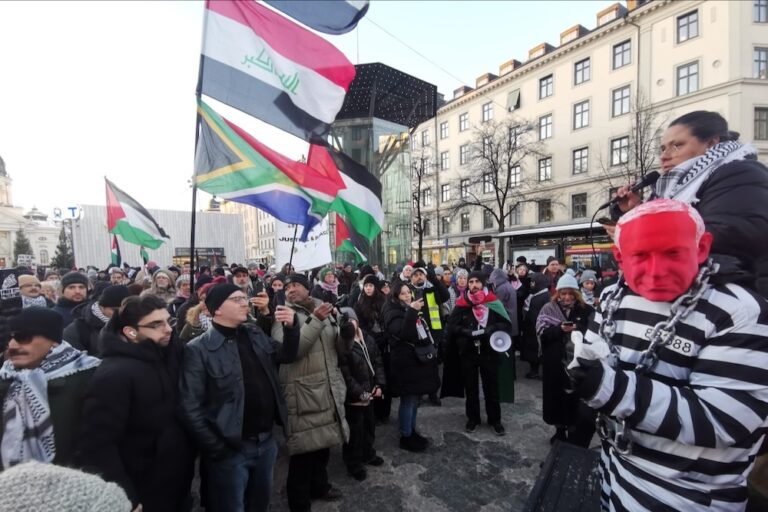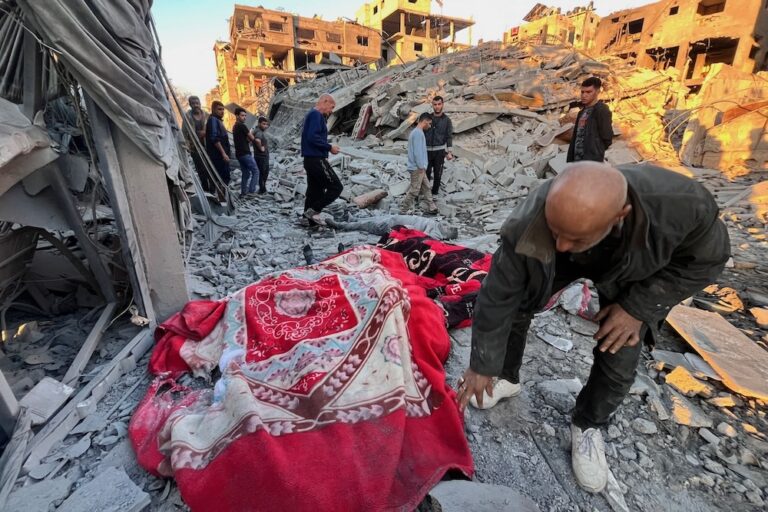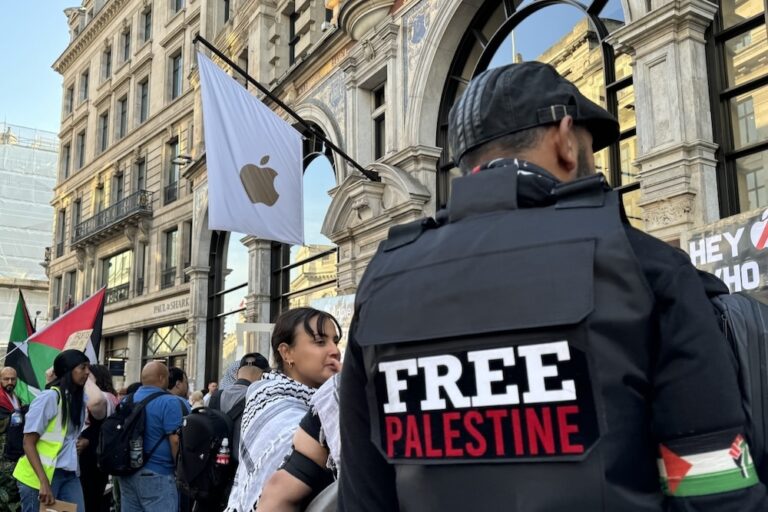Days after Israel tells journalists it is not responsible for their injury a Palestinian cameraman dies in Gaza. Khaled Hamad is the second media professional to have died since the beginning of Israel's military offensive on 8 July.
Update from 22 July 2014: Most recently, an Israeli war jet fired shots at the Al Jazeera office in Gaza City Centre. Media workers were forced to evacuate the building.
*************************************
“Israel is not in any way responsible for injury or damage that may occur as a result of field reporting,” said the Israeli Government Press Office in an email to journalists reporting in Gaza on 19 July, two days after Israel launched a ground offensive into the tiny, overpopulated strip of land.
One day later, Khaled Hamad, a Palestinian cameraman for Continue Production Films, was killed during Israeli artillery shelling of the Shujaiyeh residential district. According to the Palestinian Center for Development and Media Freedoms (MADA), Hamad was wearing a vest clearly marked “Press”.
“What we are seeing in Gaza is both shocking and horrific,” said President of the International Federation of Journalists Jim Boumelha in reaction to Hamad’s death. “Journalists must be allowed to report what is happening and not be targeted by the army for their work.”
Khaled Hamad is the second media professional to have died since the beginning of Israel’s military offensive into Gaza on 8 July. Hamid Shihab, a 30-year-old Palestinian driver for the Gaza-based press agency Media 24, was killed in an Israeli airstrike on the agency’s press vehicle on the night of 9 July.
According to the Committee to Protect Journalists (CPJ), Israeli airstrikes have also targeted buildings housing media outlets in Gaza, injuring at least three journalists.
“The Israel Defense Forces know where media outlets are located in Gaza and must ensure that they are not hit as part of its offensive,” said CPJ Middle East and North Africa Program Coordinator Sherif Mansour. “Attacking media outlets is a violation of international law and denies journalists their right to protection as civilians in a war zone.”
But these civilians have not been protected in this war zone. More than 500 people have been killed in Gaza since 8 July. According to U.N. figures, 72% of those killed were civilians. As mentioned in the above email to journalists, Israel does not plan to extend protection to journalists either.
According to The Huffington Post‘s Sophia Jones, who is now reporting from within Gaza, the Israel Defense Forces (IDF) are requiring journalists entering the strip to sign a form absolving Israel of all responsibility in the event of injury or death.
At erez crossing, reporters crossing into #gaza are made to sign form absolving IDF of any responsibility if press gets hurt/worse.
— Sophia Jones (@Sophia_MJones) July 18, 2014
Thanks to the foreign and local journalists now based in Gaza, people around the world have been getting a steady flow of live updates via social media concerning the situation on the ground regardless of the risks involved.
Colleagues coming back to file all telling identical stories from their reporting trips. Getting more and more dangerous to work #Gaza
— peter beaumont (@petersbeaumont) July 20, 2014
A quick glance at activity on Twitter on 20 July conveys it was the deadliest day of the conflict so far. At least 100 Palestinians and 13 Israeli soldiers died across Gaza.
Below are some tweets by the Guardian‘s Peter Beaumont, NBC News correspondent Ayman Mohyeldin, Agence France-Presse reporter Sara Hussein, and Stefanie Dekker from Al Jazeera English describing what they saw in Shujaiyeh on 20 July.
Just got back from Shuaji’iya’s Beltaji Street absolute scene of devastation. Bodies being dug out of rubble …
— peter beaumont (@petersbeaumont) July 20, 2014
Emotional scenes at Shifa Hospital’s Morgue. All the details on tonight’s @NBCNightlyNews broadcast live from #gaza pic.twitter.com/r5F5wSgkKG
— Ayman Mohyeldin (@AymanM) July 20, 2014
Our report on the devastation from Shujayea #Gaza http://t.co/kPoGGBXsda
— Stefanie Dekker (@StefanieDekker) July 20, 2014
Unbelievable scenes of people fleeing by foot from Shejaiya, where there are casualties lying in streets, ambulances every minute at Shifa.
— Sara Hussein (@sarahussein) July 20, 2014
Most recently, CPJ took to twitter to urge journalists in Gaza to take care of themselves both physically and mentally. It linked to the Dart Center for Journalism and Trauma, a project of the Colombia University Graduate School of Journalism that provides journalists around the world with the resources necessary to meet the challenges of conflict reporting.



